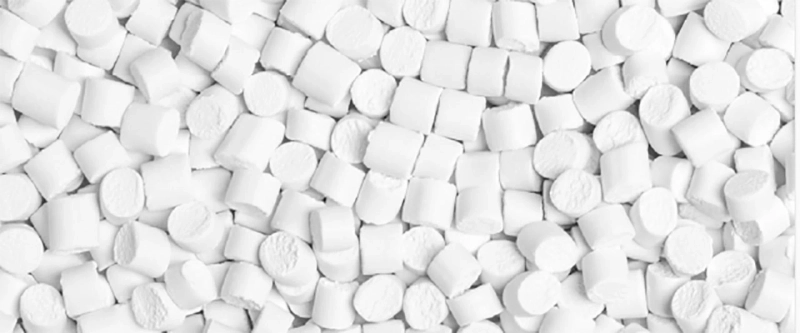White masterbatches, a staple in the plastics and manufacturing industries, are versatile additives that serve a multitude of functions. These concentrated mixtures of white pigments, additives, and carrier resin offer a host of benefits, making them indispensable in applications where achieving a consistent, brilliant white color is essential. In this article, we will explore the applications and advantages of white masterbatches in various industries.
The Composition of White Masterbatches
At the heart of every white masterbatch is a carefully formulated mixture. It typically includes white pigments, which determine the shade of white, additives, and a carrier resin. The carrier resin acts as a dispersing agent, ensuring even distribution of the white pigments throughout the final plastic product.
Achieving the Perfect White
White is often considered a straightforward color, but in the world of plastics, achieving the perfect white can be surprisingly complex. Various factors, including the choice of polymer and the manufacturing process, can influence the final color. White masterbatches are engineered to overcome these challenges and ensure the color is uniform, stable, and precisely as required.
Applications of White Masterbatches
White masterbatches find applications across a wide range of industries. Their versatility and capabilities make them an invaluable component in numerous products and sectors. Here are some notable examples:
Packaging: White masterbatches play a crucial role in the packaging industry. They are used to create a variety of white plastic products, such as bottles, containers, and films. White packaging not only conveys cleanliness and purity but also provides an ideal canvas for product labels and branding. The versatility of white masterbatches allows them to be used in both food and non-food packaging.
Automotive Industry: White masterbatches are widely used in the automotive sector for interior components like dashboard panels, door trims, and seats. The clean and elegant appearance of white complements modern car designs and imparts a sense of sophistication to the vehicle's interior.
Construction Materials: White masterbatches are employed in the production of construction materials, including PVC pipes, fittings, and profiles. These materials need to meet stringent performance and durability standards. White masterbatches ensure that the final products not only meet these requirements but also maintain their pristine appearance over time.
Consumer Goods: White masterbatches enhance the aesthetics and desirability of consumer products, such as appliances, electronics casings, toys, and sporting goods. The clean, bright white color creates a sense of modernity and cleanliness, making these products more appealing to consumers.
Healthcare and Medical Devices: In the healthcare industry, white masterbatches are used to create various medical devices and packaging materials. These products must not only maintain their hygiene but also be free from contamination. The color white is associated with cleanliness and sterility, making it ideal for medical applications.
The Advantages of White Masterbatches
The use of white masterbatches offers several advantages, making them an indispensable component in these industries:
Consistent Color: White masterbatches ensure that the final product has a consistent and vibrant white color, regardless of variations in raw materials and manufacturing processes. This consistency is crucial for maintaining the desired appearance and quality of products.
Opacity and Light Reflection: White masterbatches enhance the opacity and light reflection properties of plastics. In packaging, for example, this is essential for preventing the transmission of light, protecting light-sensitive contents, and maintaining product freshness.
UV Resistance: Some white masterbatches are formulated with UV stabilizers, adding an extra layer of protection to the plastics. This UV resistance is beneficial for products that may be exposed to sunlight and need to maintain their appearance and integrity over time.
Enhanced Aesthetics: White is often associated with purity, cleanliness, and simplicity. It imparts a modern, fresh look to products, making them more appealing to consumers. This is particularly valuable in industries where visual appeal matters, such as consumer goods and packaging.
Reduced Manufacturing Costs: White masterbatches can help reduce production costs by allowing manufacturers to use less colorant in the form of costly white pigments. This results in cost savings without compromising the quality of the final product.
Challenges and Considerations
While white masterbatches offer numerous advantages, challenges can arise during their production and application. Achieving optimal dispersion of white pigments is crucial for consistent coloring. Compatibility with the base polymer and the desired level of opacity are factors that require careful consideration.
The Future of White Masterbatches
As industries continue to evolve and place greater emphasis on sustainability and performance, the role of white masterbatches is expected to expand. Ongoing research and development in masterbatch technology will likely lead to even more specialized and versatile white masterbatches that cater to the diverse needs of different applications.
In Conclusion
White masterbatches are unassuming but vital components in a wide array of industries. They provide a consistent and brilliant white color to plastic products, enhance their aesthetics, and offer a range of benefits, from UV resistance to light-blocking properties. Whether it's a sleek car interior or sterile medical equipment, white masterbatches leave their mark on a multitude of products, enriching their appearance and performance. As industries evolve and demand high-quality, sustainable, and visually appealing products, white masterbatches will continue to play a pivotal role in the world of plastics and manufacturing.



